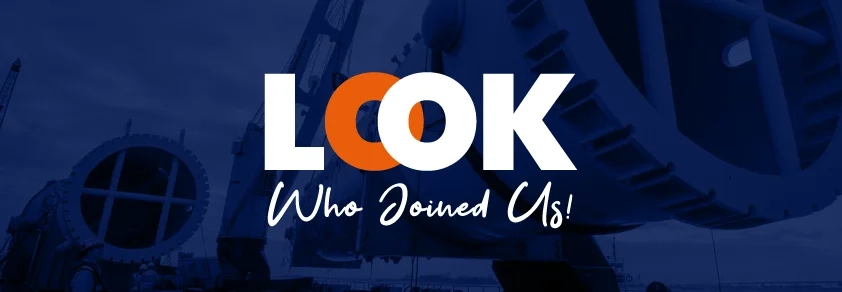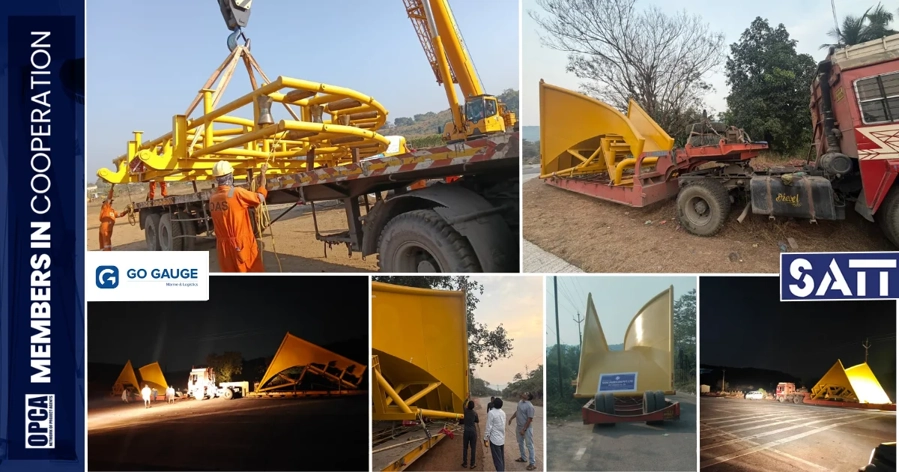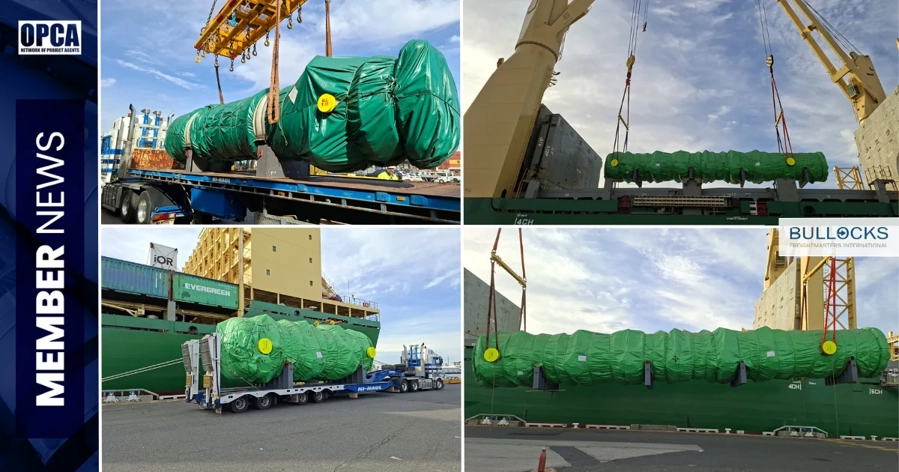Safely Across the Seas: Risk and Reliability in Heavy Lift
Table of Contents
It's challenging enough to ship a standard container across the globe — but if it's a reactor weighing hundreds of thousands of pounds, a wind turbine blade longer than an aircraft, or construction equipment tall enough to stand next to skyscrapers, complicated takes on a new meaning. Welcome to the heavy lift shipping and project cargo world, where risk and reliability sit at the very heart of each and every movement. Unlike containerized trade, founded upon standardization, heavy lift shipping is non-standard by its very nature. Each shipment is customized, and it brings challenges which call for expertise, precision, and a trusted group of professionals.
The Many Faces of Risk in Heavy Lift Transport
Risk of oversized cargo shipping does not have a single source; it occurs at every stage of shipping.
- Planning risk: There's no two-shipments-a-like method here. All the routes must be surveyed months in advance, considering bridges, tunnels, roadblocks, climatic conditions, and regional infrastructure limitations, among others.
- Operational risk: Ports will require suitable infrastructure — hardened quays, deepwater berths, roll-on/roll-off ramps, and heavy-duty craneage. Not every port will tolerate loads of this kind, so there will be selection involved.
- Regulatory risk: Most heavies entail traversing jurisdictions. There is a need for compliance with international standards, customs codes, and domestic safety laws so as not to incur harmful delays.
- Environmental risk: Bad seas, windy weather, or shifting tides can stall operations. Postponed weather might be unavoidable, but preparation determines how quickly a project will recover.
It is not optional for project cargo shipping companies to understand and manage these risks; it is the basis of reliability.
Safety as the First Priority
Ship safety in heavy lift shipping is not simply securing cargo — it's securing the lives of crews, of harbor workers, and of the communities invested in international trade. It may involve dozens of experts — engineers, riggers, surveyors, and forwarders — and bring them all into choreographed motion for an oversized lift of cargo.
Main safety precautions include:
- Specific lifting plans: Engineers determine the center of gravity, stability, and weight distribution for every piece of cargo.
- Specific equipment: Heavy lift shipping vessels typically transit cranes of a few hundred tons lift, reinforced lashings, and dynamic positioning equipment for stabilization at sea.
- Standards compliance worldwide: Adherence to safety codes and document practices simplify customs clearance and reduce risk exposure.
Reliability and safety here go together hand-in-hand. Good, careful engineering getting the cargo through intact and on time is due, but so also is vigorous risk control.
Why Reliability Matters in Heavy Lift Shipping
With industries built on heavy equipment transport, reliability is more than a promise — it's a prerequisite. A turbine delivery delay can shut down construction of a wind farm. Missing components at a refinery can freeze production of power. A shipping delay of moving mining equipment can stall exports and impact on an entire national economy.
Unlike container shipping, whose shipment activity is continuously ongoing, each heavy lift project is tied up in certain industrial timelines. That makes choosing the best shipping companies for heavy lift a strategic business decision. Reliability here translates into development milestones, energy security, and infrastructural development right away.
Technology as a Risk-Reduction Tool
Risks of project cargo logistics cannot be completely eliminated, but technology is introducing more predictability and control into them.
- Shippers can track oversized cargo shipments overseas in real-time tracking systems.
- Predictive analytics enable us to forecast bottlenecks, disruptive weather, and congestion at the port in advance.
- Simulation programs allow engineers to pilot lift and stowage plans virtually before implementation.
These technologies never replace human expertise but enrich it. Project shipping companies and forwarders now combine years of operational know-how and data-driven technologies in pursuit of reducing uncertainties. Transparency and visibility cultivate trust — necessary when shipments carry high-value, non-replaceable components.
Breakbulk, Heavy Lift Vessels, and Multimodal Solutions
Project cargo never constitutes a single-mode shipment. Depending on cargo, logistics will be intermodal:
- Breakbulk shipping of oversized parts that cannot be containerized.
- Special cargo ships for oversized and project cargos.
- Smaller or complementary equipment shipping in containers.
- Multimodal solutions, combining sea freight and air or road, when schedules call for quick delivery of key parts.
It is this kind of flexibility that allows project cargo networks to balance cost, reliability, and safety. It underscores, too, why sea freight forwarders, even old-hands, can't be replaced: they customize the appropriate balance of methods for every one-of-a-kind project.
Sustainability and Risk Management
Nowadays, reliability is measured by sustainability as well. Heavy lift large-scale work often involves long distances and large amounts of fuel consumption. There is increasing pressure on the shipping business to become more environmentally friendly, and international sea freight shipping companies are evolving.
Cleaner fuels, more efficient itineraries, and energy-reducing equipment are rapidly becoming standard practice in heavy lifting operations. Sustainability, for forwarders, equally means steering customers towards more enlightened logistics decisions — consolidation of shipments, integration with environment-friendly carriers, and investments in greener technologies. Lower risk to the Planet has become equated with reduced risk to supply chains.
The Role of Networks in Delivering Reliability
Even the most well-prepared firms can't risk-manage alone. That's why networks like OPCA enter the scene. Collaboration serves as a safety net in project cargo logistics:
- Members provide regional expertise in relation to port conditions, customs formalities, and legislation.
- Reputable partners will be able to supply resources, such as specialist cranes or heavy lift vessels.
- Network members supply alternate routes, solutions, and assistance when there is disruption.
Strength is in reliability if it's group strength. A project cargo network ensures companies never stand-alone if issues arise but interconnected in a global group of reliable experts.
OPCA: Building Trust in Heavy Lift Logistics
At the Overseas Project Cargo Association (OPCA), reliability is not some future goal — it's at the heart of everything we're about. OPCA gathers global project cargo shipping companies, heavy lift transportation specialists, and sea freight forwarding authorities in a worldwide, trusted community.
Our members bring together expertise in each and every area of heavy lift logistics: shipping oversized shipments and relocating heavy equipment, through breakbulk and multimodal options. Together, they represent some of the best shipping companies in the trade — not only through their ships and equipment, but through their collective commitment to safety, teamwork, and reliability.
When shipping companies need to move tomorrow's infrastructure, members of OPCA stand by. By cooperating and sharing resources, experience, and expertise, they ensure complex shipments get through safely across the waters.
There will always be dangers in heavy lift shipping. Cargo is far too large, itineraries far too involved, and stakes far too high for it to be anything else. But through the virtue of good preparation, harsh safety protocols, advances in technology, and dependable global networks, reliability is achievable.
At OPCA, reliability is not only a standard, but a promise. Our members do not merely carry oversized shipments; they enable development, electrify industries, and lay the foundations of future economies.
Discover the worth of OPCA Membership Benefits and learn how by becoming a member of our reliable community you gain access to partners, sources, and experts, which turn risk into certain success. With OPCA, trade giants cross the seas safely.
_logo.webp)



